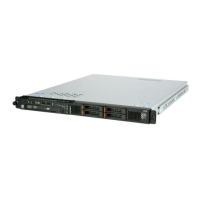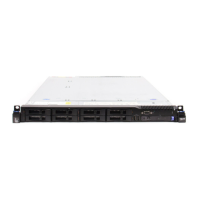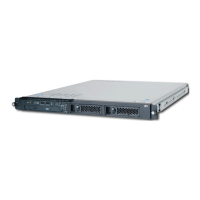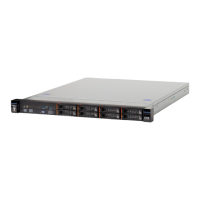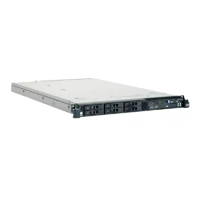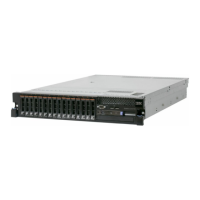b. Update the UEFI code, following the instructions that come with the update
file that you downloaded.
2. Update the IMM firmware:
a. Download the latest version of the IMM firmware from http://www.ibm.com/
systems/support/.
b. Update the IMM firmware, following the instructions that come with the
update file that you downloaded.
3. Configure the UEFI settings:
a. When you are prompted to start the Configuration/Setup Utility program,
restart the server and press F1.
b. Select System Settings → Devices and I/O Ports.
c. Select Console Redirection Settings; then, make sure that the values are
set as follows:
v COM Port 1: Enable
v Remote Console: Enable
v Serial Port Sharing: Enable
v Serial Port Access Mode: Dedicated COM1 Settings
v Baud Rate: 115200
v Data Bits:8
v Parity: None Stop
v Bits:1
v Thermal Emulation: ANSI
v Active After Boot: Enable
v Flow Control: Hardware
d. Press Esc twice to exit the Devices and I/O Ports section of the
Configuration/Setup Utility program.
e. Select Save Settings; then, press Enter.
f. Press Enter to confirm.
g. Select Exit Setup; then, press Enter.
h. Make sure that Yes, exit the Setup Utility is selected; then, press Enter.
Using the LSI Configuration Utility program
Note:
v Simple-swap SATA hard disk drives support AHCI mode.
v Simple-swap models only support ServeRAID-BR10il adapter.
Use the LSI Configuration Utility program to configure and manage redundant array
of independent disks (RAID) arrays. Be sure to use this program as described in
this document.
v Use the LSI Configuration Utility program to perform the following tasks:
– Perform a low-level format on a hard disk drive
– Create an array of hard disk drives with or without a hot-spare drive
– Set protocol parameters on hard disk drives
The integrated SAS/SATA controller with RAID capabilities supports RAID arrays.
You can use the LSI Configuration Utility program to configure RAID 1 (IM), RAID
1E (IME), and RAID 0 (IS) for a single pair of attached devices. If you install the
optional ServeRAID-MR10i SAS/SATA controller, it provides RAID levels 0, 1, 5, 6,
Chapter 3. Configuring the server 71
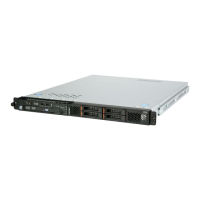
